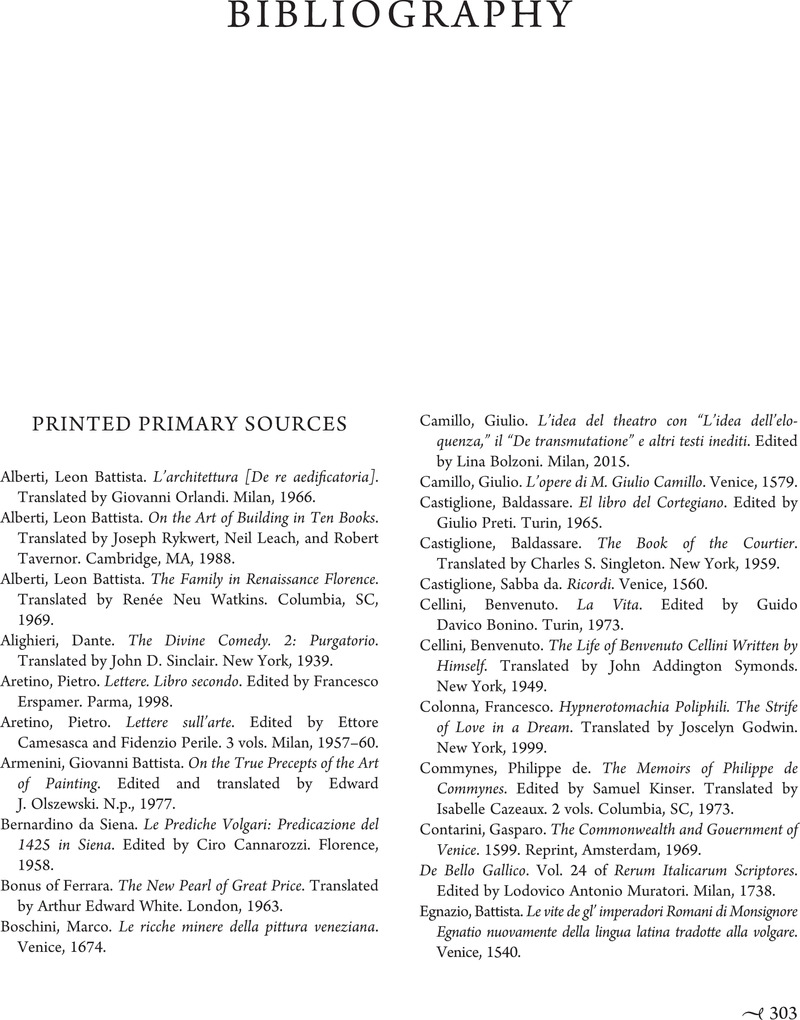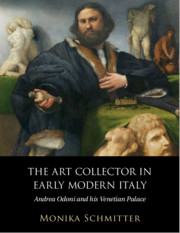Book contents
- The Art Collector in Early Modern Italy
- The Art Collector In Early Modern Italy
- Copyright page
- Dedication
- Contents
- Acknowledgments
- Introduction
- Chapter 1 Venice in Transition
- Chapter 2 Second-Generation Venetian
- Chapter 3 Odoni’s Façade
- Chapter 4 Creating Rome in Venice: Odoni’s Antigaia
- Chapter 5 The Portego
- Chapter 6 The Camere
- Chapter 7 Transmuting the Self: Lotto’s Portrait of Odoni
- Conclusion
- Appendix Aretino’s Letter To Odoni
- Notes
- Bibliography
- Index
- References
Bibliography
Published online by Cambridge University Press: 23 August 2021
- The Art Collector in Early Modern Italy
- The Art Collector In Early Modern Italy
- Copyright page
- Dedication
- Contents
- Acknowledgments
- Introduction
- Chapter 1 Venice in Transition
- Chapter 2 Second-Generation Venetian
- Chapter 3 Odoni’s Façade
- Chapter 4 Creating Rome in Venice: Odoni’s Antigaia
- Chapter 5 The Portego
- Chapter 6 The Camere
- Chapter 7 Transmuting the Self: Lotto’s Portrait of Odoni
- Conclusion
- Appendix Aretino’s Letter To Odoni
- Notes
- Bibliography
- Index
- References
Summary

- Type
- Chapter
- Information
- The Art Collector in Early Modern ItalyAndrea Odoni and his Venetian Palace, pp. 303 - 321Publisher: Cambridge University PressPrint publication year: 2021



